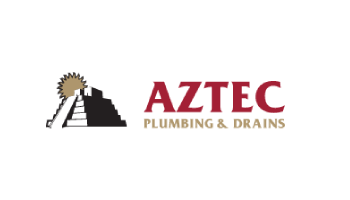Water Heater Not Filling Up? Causes, Fixes & Prevention Tips
A water heater that won’t fill up can leave you with an unexpected cold shower and a frustrating plumbing issue. At Aztec Plumbing, we’ve been providing trusted water heater solutions in Fort Myers for years, tackling common issues like sediment buildup, faulty valves, and hard water blockages. Our expert plumbers diagnose and resolve these problems efficiently, ensuring your system operates at peak performance.
Common Causes of a Water Heater Not Filling
Several issues can prevent a water heater from filling properly, ranging from minor blockages to more serious component failures. Some of the most common causes include:
- Closed or partially closed water supply valve: Water may be restricted from entering the tank.
- Faulty temperature and pressure relief (T&P) valve: A malfunctioning valve can block water flow.
- Sediment buildup: Minerals inside the tank clog internal components, reducing water flow.
- Airlocks in the plumbing system: Trapped air prevents proper water distribution.
- Leaking or cracked dip tube: This misdirects incoming water, affecting how the tank fills.
- Clogged inlet screen or filter: Debris can accumulate and restrict water intake.
- Frozen pipes: Though uncommon in Florida, frozen pipes can stop water from reaching the tank.
- Hard water deposits: Mineral buildup accelerates blockages, reducing system efficiency.
How to Troubleshoot Water Heater Filling Issues
If your water heater isn’t filling properly, here are a few key steps to help diagnose the issue:
- Check the water supply valves: Ensure the main water supply and the heater’s shut-off valve are fully open.
- Test home water pressure: Use a pressure gauge on an outdoor hose bib to see if low pressure is affecting your plumbing system.
- Inspect the inlet screen: Mineral deposits or debris could be blocking water intake.
- Listen for unusual sounds: Knocking or gurgling noises may indicate trapped air.
- Check other fixtures: If multiple faucets have low pressure, the issue may not be isolated to the water heater.
- Know your system type: Tank water heaters often experience sediment buildup, while tankless models may suffer from inlet filter clogs or gas flow issues.
Fixing a Water Heater That Won’t Fill
Once the issue is identified, there are several ways to restore proper function:
- Open all water supply valves to ensure proper water flow.
- Clear airlocks by running multiple hot water taps or using a hose bib to release trapped air.
- Flush the tank to remove sediment that may be causing blockages.
- Thaw frozen pipes carefully with a heating pad or hairdryer if needed.
- Clean clogged inlet screens using vinegar or a soft brush.
- Replace a faulty T&P valve to allow water to enter the tank properly.
- Install a water softener to prevent mineral buildup from hard water.
Safety Precautions Before DIY Repairs
Before attempting any repairs, follow these essential safety precautions:
- Turn off the gas or electricity to the heater before working on the unit.
- Relieve tank pressure using the T&P valve before draining.
- Avoid direct contact with hot water or steam to prevent burns.
- Use insulated gloves and goggles when handling gas components or electrical connections.
When to Call a Professional Plumber
While some water heater issues can be fixed with simple DIY solutions, others require professional attention. Consider calling a plumber if you experience:
- Major leaks or visible damage to the tank.
- Persistent airlocks or valve malfunctions that don’t resolve.
- Complex repairs such as dip tube or pressure regulator replacements.
- Concerns about voiding the manufacturer’s warranty with DIY repairs.
- Suspected hidden leaks in the plumbing system.
A professional plumber can diagnose and fix issues quickly, preventing further damage and ensuring the longevity of your water heater.
Preventing Future Water Heater Issues
Regular maintenance helps homeowners avoid common water heater problems and keep their system running efficiently. Consider these preventative measures:
- Flush the tank annually to remove sediment buildup.
- Inspect shut-off valves, inlet screens, and plumbing connections at least once a year.
- Test home water pressure regularly to ensure it stays within the recommended range.
- Install a water softener or use descaling treatments to reduce mineral buildup.
- Insulate exposed pipes in colder climates to prevent freezing.
By keeping up with routine maintenance, you can improve your water heater’s efficiency and reduce the risk of unexpected breakdowns.
FAQs About Water Heater Filling Problems
How do I test my home’s water pressure?
Attach a pressure gauge to an outdoor hose bib to measure pressure levels. If readings are low, there may be a broader plumbing issue.
Can a clogged inlet screen stop my water heater from filling?
Yes, mineral buildup or debris can block water intake. Cleaning or replacing the screen may restore normal function.
Why is my water heater filling slowly?
Possible causes include sediment buildup, low home water pressure, or a partially closed shut-off valve.
Does hard water contribute to water heater problems?
Yes, minerals in hard water accelerate sediment accumulation. Regular flushing and water softeners can help prevent buildup.
Can DIY repair my water heater warranty?
It depends on the manufacturer. Always check warranty terms before attempting repairs.
How long does it take to get hot water after fixing a filling issue?
Depending on the tank size, it may take one to two hours for hot water to return.
Schedule Your Water Heater Service Today
If your water heater isn’t filling properly, don’t wait for the problem to get worse. Whether it’s a simple fix or a sign of a bigger issue, Aztec Plumbing’s expert team is here to help. Our experienced plumbers provide fast, reliable water heater diagnostics and repairs, ensuring you have a steady supply of hot water when you need it most.
Call Aztec Plumbing today to schedule your water heater service and get your system back in top condition!
Contact Us
Contact Us
"*" indicates required fields


